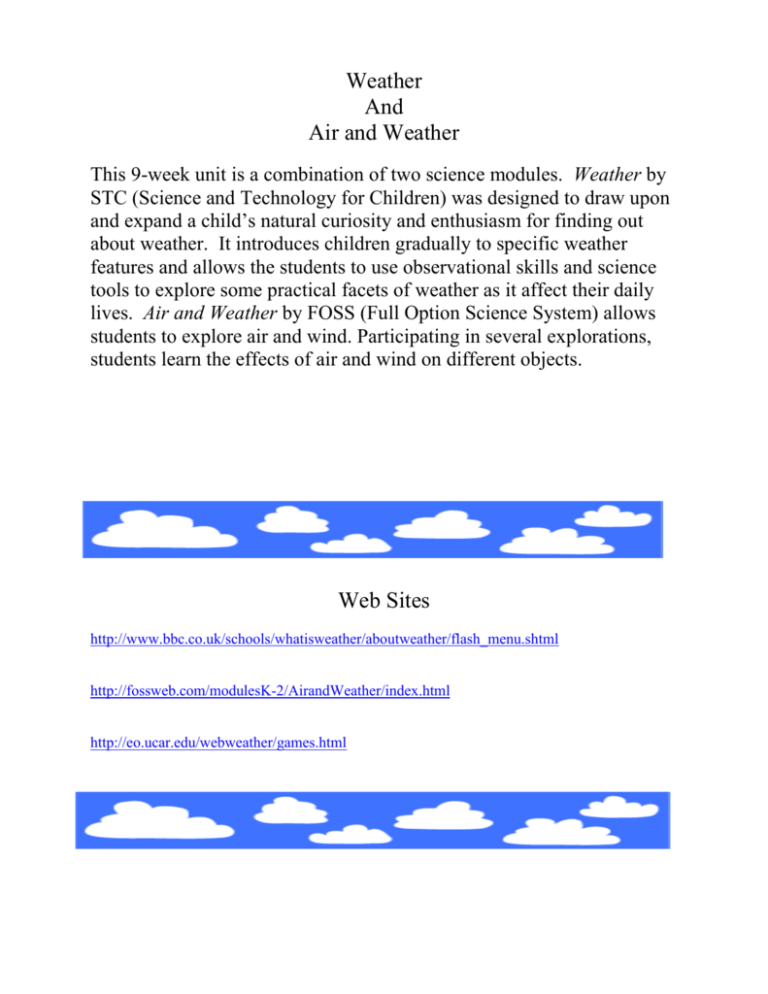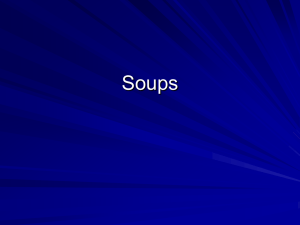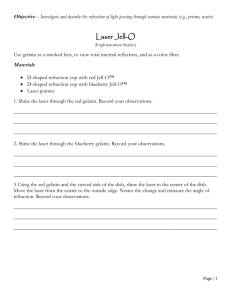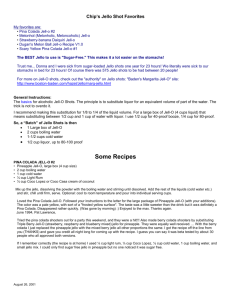Weather_final_document
advertisement

Weather And Air and Weather This 9-week unit is a combination of two science modules. Weather by STC (Science and Technology for Children) was designed to draw upon and expand a child’s natural curiosity and enthusiasm for finding out about weather. It introduces children gradually to specific weather features and allows the students to use observational skills and science tools to explore some practical facets of weather as it affect their daily lives. Air and Weather by FOSS (Full Option Science System) allows students to explore air and wind. Participating in several explorations, students learn the effects of air and wind on different objects. Web Sites http://www.bbc.co.uk/schools/whatisweather/aboutweather/flash_menu.shtml http://fossweb.com/modulesK-2/AirandWeather/index.html http://eo.ucar.edu/webweather/games.html Vocabulary weather – describes conditions in the air outside at a given time. precipitation – a form of liquid that falls from the sky meteorologist – a scientist who studies the weather thermometer – tool used to measure temperature temperature – describes how hot or cold the air is stratus clouds – low level, gray sheet-like, i.e. fog cirrus clouds – the highest clouds, made of ice crystals, “mares tales” cumulus clouds – higher than stratus, fair weather, puffy clouds parachute- a tool that uses air resistance to slow a falling object air resistance – slows the fall of an object wind – moving air Skills Observing the weather by using the senses. * Discussing and recording information about weather features. * Using simple tools to estimate wind speed and measure temperature and rainfall.* Observing differences in types of clouds. * Conducting experiments and drawing conclusions about appropriate clothing for different types of weather. * Organizing weather data on graphs and long-term data collection charts. Interpreting and summarizing long-term weather data. * Ask and answer questions. Plan and conduct simple investigations. Use tools and techniques to gather data. Use data to construct reasonable explanations. Communicate investigations and explanation. Concepts Weather changes from day to day and week to week. Features of the weather include cloud cover, precipitation, wind, and temperature.* Tools used to measure different features of weather include wind scales, thermometers, and rain gauges. * Meteorologists are scientists who study, observe, and record information about the weather and who use that information to forecast the weather. * Weather affects the decisions people make about the clothing they will wear and about their outside activities. * Air can move things around. You can feel air. * Air takes up space. Air is matter. Air can be trapped in a vial underwater. Air bubbles come out of the vial if it’s tipped sideways. Air takes up space, so water can’t get in and get the towel wet. A parachute falls slowly because the air pushes against it. * Air resistance slows the parachute down.* You can’t push the plunger in all the way when air is trapped inside. Plunging one syringe compresses the air, crating pressure and pushing the other one out. Air takes up space in a bottle and won’t let water in if the air can’t get out. Air pressure can push on water and make it move. Air inside a balloon is compressed by the rubber skin of the balloon Pressure from the compressed air moves the balloon rocket. Bubbles are filled with air. Bubbles move with the air. They can show how fast or slow air is moving. They can show the direction air is moving. Wind vanes tell us the direction the wind is coming from. You can use things like bubbles, clouds, and flags to tell the direction of the wind. Air pushes against a kite to make it fly. A wind vane can help you know which direction to fly the kite. An anemometer can help you decide if there is enough wind for a kite to fly. Family Activities http://www.preschooleducation.com/aweather.shtml Read these books together: The Cloud Book Clouds What’s the Weather Today Cloudy with A Chance of Meatballs It Looked Like Spilt Milk The Legend of the Bluebonnet Rain Talk The Snowy Day By: Tomie DePaola By: Gail Saunders-Smith By: Allan Fowler By: Judi Barrett By: Charles G. Shaw By: Tomie DePaola By: Mary Serfozo By: Ezra Jack Keats JELL-O® Rainbow Recipe Rating: Prep Time: 10 min Total Time: 4 hr 10 min Makes: 12 servings Nutrition Information Kraft Kitchens Tips Ratings and comments You may also enjoy 6-1/4 cups boiling water, divided 2 pkg. (4-serving size each) JELL-O Brand Gelatin, any red flavor, 2 pkg. (4-serving size each) JELL-O Brand Orange Flavor Gelatin 2 pkg. (4-serving size each) JELL-O Brand Lemon Flavor Gelatin 2 pkg. (4-serving size each) JELL-O Brand Lime Flavor Gelatin 2 pkg. (4-serving size each) JELL-O Brand Berry Blue Flavor Gelatin 1-1/2 cups thawed COOL WHIP Whipped Topping STIR 1-1/4 cups of the boiling water into each flavor dry gelatin in separate bowls at least 2 minutes until completely dissolved. Pour each flavor of gelatin into separate 8- or 9-inch square pans. REFRIGERATE 3 hours or until firm. Cut gelatin in each pan into 1-inch cubes. ARRANGE the gelatin cubes in rows on a large tray or baking sheet to resemble a rainbow, using a different color of gelatin in each row and double stacking the cubes if necessary to fit on tray. Spoon whipped topping evenly into 2 small serving bowls. Place 1 bowl at each end of the rainbow to resemble "clouds." To serve, dip the gelatin cubes into the whipped topping.









